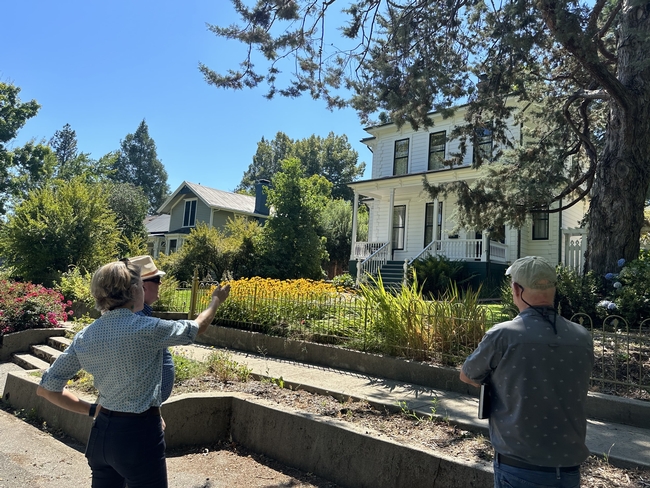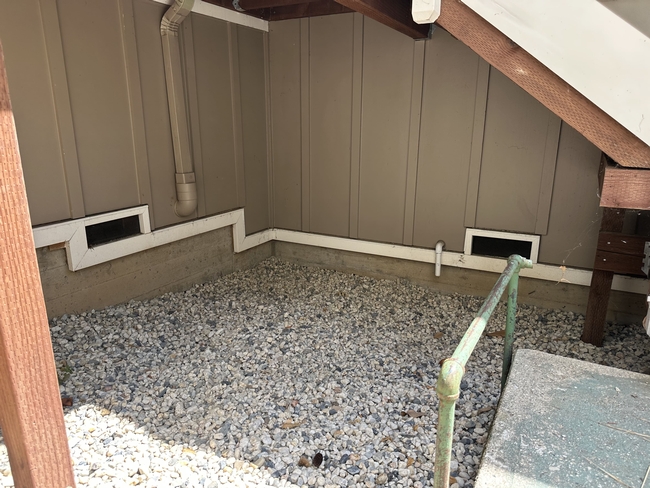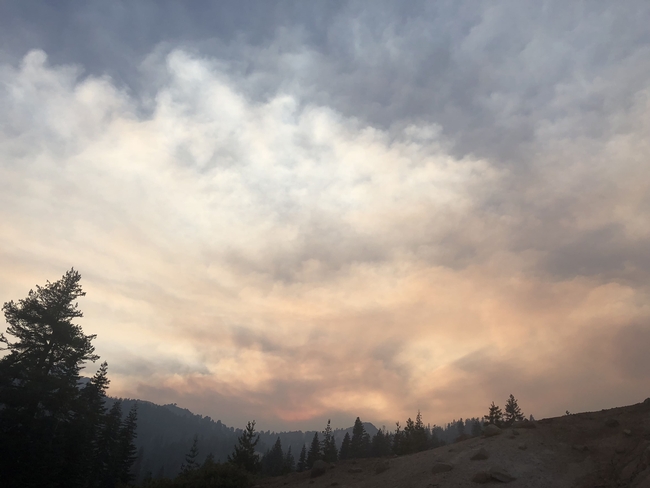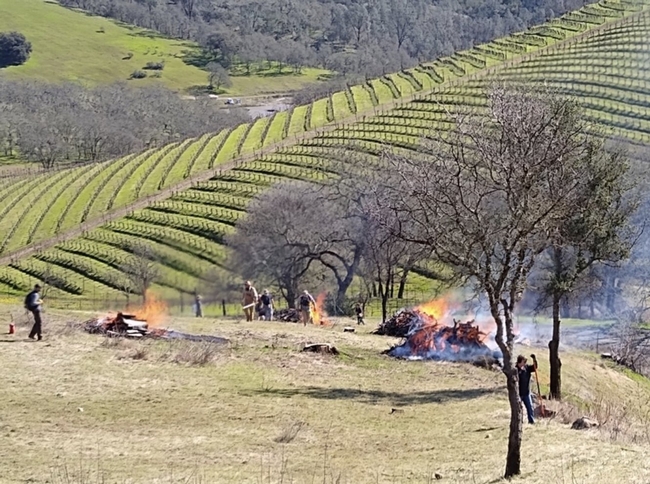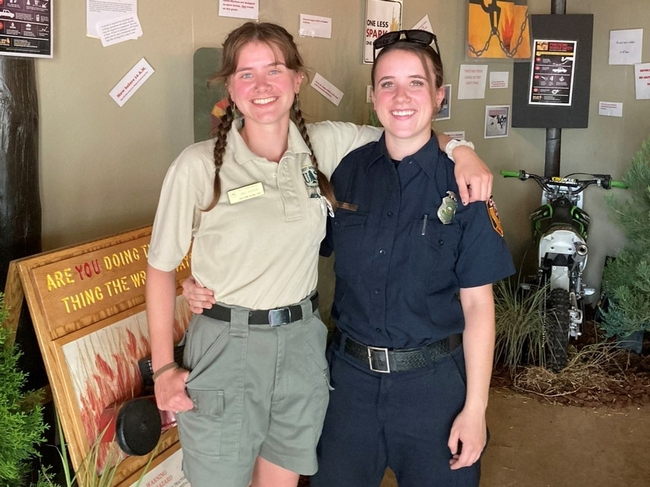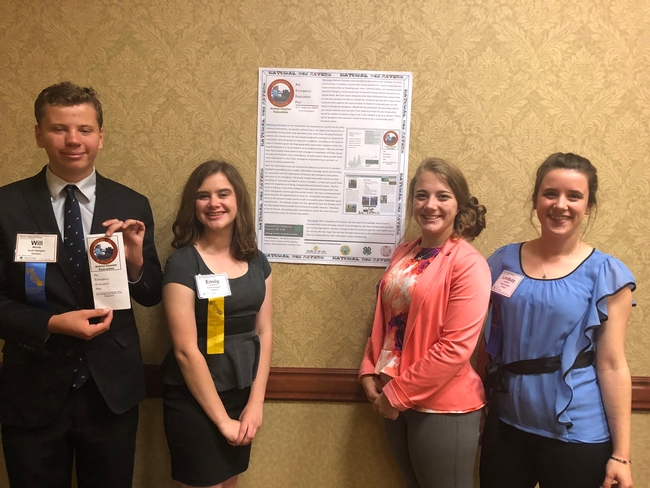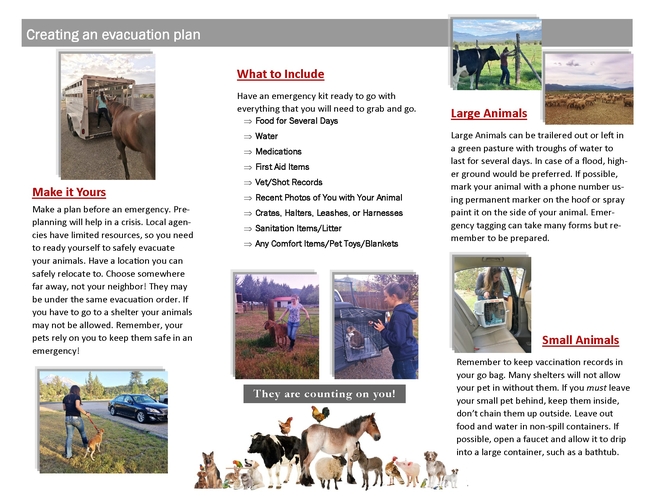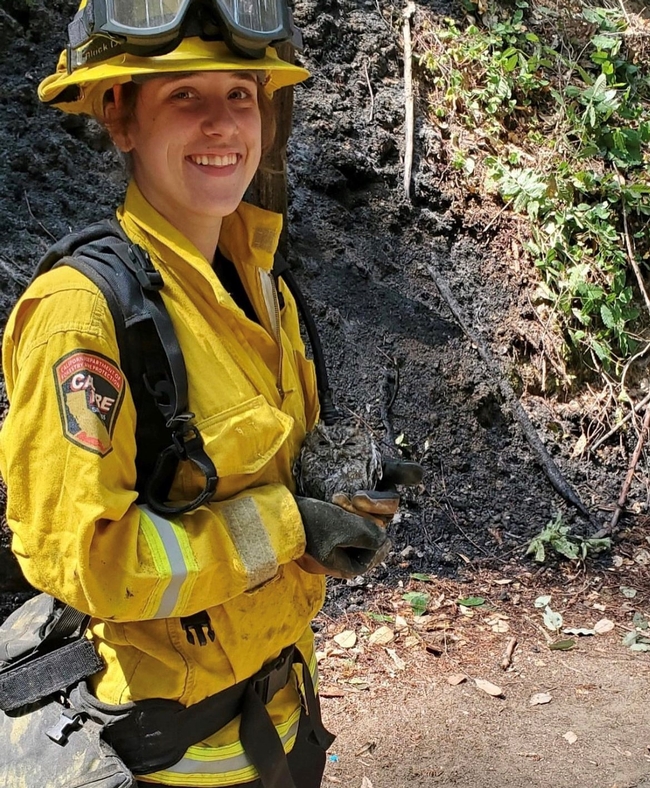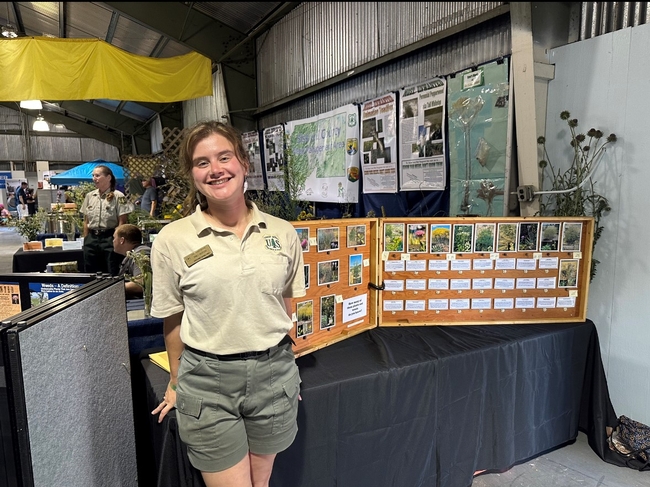Posts Tagged: preparedness
Simple tasks make big difference in preparing for wildfire, smoke
UC ANR Fire Network compiles expert advice on preparedness, evacuation tasks
The explosive growth of the Park Fire in Northern California was fueled by recent, intense heat waves and extremely dry vegetation – conditions seen at many locations across the state.
Given the potential for wildfire and smoke impacts during what is expected to be a protracted “fire season,” California residents should think ahead and complete emergency preparations: https://ucanr.edu/sites/fire/Preparedness/.
“If you are concerned that you or someone you know could be affected by fire or smoke, now is the time to take simple steps to prepare,” said Yana Valachovic, University of California Cooperative Extension forest advisor for Humboldt and Del Norte counties.
Valachovic and other members of the UC Agriculture and Natural Resources Fire Network are urging community members to tackle small but significant tasks to minimize potential fire damage. Many of these tasks can be finished in a weekend, such as:
- Clean debris from your roof and gutters.
- Inspect the area around your home and nearby structures and remove all combustibles (dead grass, plants, woody mulch, stored wood, etc.) in the first 5 feet, including under decks and stairs.
- Inspect the foundation, under-eave, and gable-end vents for holes and damage; add a layer of finer metal-mesh screens (1/8” mesh) to the vents to prevent ember penetration.
- Inspect the garage door bottom seal to make sure embers can't blow under the door.
- Replace the first 5 feet of wooden fences that attach to buildings with a noncombustible panel or gate.
A recently published report, “Retrofitting a Home for Wildfire Resistance,” also can help residents prioritize the measures that are most cost-effective and fit their budget.
Six things to do, six hours before evacuation
As evacuation warnings are issued for local communities, there are six important things to do in advance of an actual evacuation order, according to Valachovic:
- Close windows, pet doors and skylights.
- Move inside patio cushions, brooms and door mats; tie open wooden gates that attach to the house or deck to prevent a fire from traveling from the fence to the house.
- Relocate the barbecue propane tank away from home.
- Stage buckets of water and garden hoses in visible locations.
- Dress for evacuation: cotton clothes, sturdy shoes, hat and face protection and leather gloves.
- Put your “go bag” in your vehicle.
The UC ANR Fire Network website also includes downloadable checklists – in English and Spanish – for your go bag (https://ucanr.edu/sites/fire/Safety/Evacuation/Preparing_a_Go-Bag/) and for a host of important pre-evacuation tasks for your household, property, pets and livestock (https://ucanr.edu/sites/fire/Safety/Evacuation/).
“We want communities to be wildfire-prepared – not scared,” Valachovic emphasized.
Smoke exposure a significant public health concern
Hazardous smoke can blanket wide swaths of California – and much of the Western U.S. – during ongoing wildfire events. A primer on harmful health effects, a list of tips for reducing smoke exposure, and other resources and links can be found on the UC ANR Fire Network site: https://ucanr.edu/sites/fire/Safety/Air_Quality_and_Smoke/.
“If there's smoke in the forecast for the next few days, I would keep an eye on my local air quality at fire.airnow.gov,” said Katie Low, statewide coordinator for UC ANR's Fire Network. “And if the AQI – Air Quality Index – is high, I would limit my outdoor activity, wear an N95 mask if I do go outside, and run my air purifier.”
For instructions on making a DIY air cleaner, creating a “clean air space” in your home and fitting an N95 mask properly, visit the California Air Resources Board's “Smoke Ready California” page: https://ww2.arb.ca.gov/smokereadyca.
Another useful tool is the crowd-sourced #FireMappers fire activity map – powered by the National Alliance for Public Safety GIS Foundation, GISCorps, and CEDR Digital Corps – accessible through the UC ANR Fire Network site: https://ucanr.edu/sites/fire/Safety/Current/.
Lawn-pocalypse! Surviving Drought
Ah, summer! The season of sunburns, pool parties, and… lawn droughts. If your once lush, green carpet now looks like a crunchy brown doormat, you're not alone. Let's dive into why your yard is staging a dramatic death scene and what you can do to...

Bermuda grass and weeds overtaking drought stressed turf grass.
Wildfire preparedness strategies for farms covered in UC ANR webinars
UCCE advisors will present webinars on May 21 and 28
Late spring rains have delayed California's fire season this year, which provides farmers and ranchers an opportunity to improve their wildfire preparedness. Barns, wood fencing, hay and other property commonly found on farms have inherent vulnerabilities to wildfire.
Fortunately, buildings and infrastructure can be hardened and maintained to reduce their vulnerability to fire and fire-related damage to agricultural resources. Having a plan in place to keep livestock safe and healthy is essential to maintaining animal health and resume operations as quickly as possible post-wildfire. Join the UC Agriculture and Natural Resources Fire Network team to learn about wildfire preparedness strategies for farms and ranches.
The two-part webinar series will cover hardening structures and managing livestock during wildfire.
Part 1: Ranch Hardening and Wildfire Preparedness Strategies for Agricultural Structures
- May 21 at 6-7 p.m.
- Join UC Cooperative Extension fire advisor Luca Carmignani and UCCE forest advisor Yana Valachovic to discuss best practices for incorporating principles of structure hardening and defensible space into agricultural structures and operations.
- Register by May 20 at https://bit.ly/3y1MbuP. Link to webinar will be emailed to registrants.
Part 2: The Realities of Managing Livestock Health During Wildfire
- May 28 at 6-7:30 p.m.
- Join UCCE livestock and natural resource advisors and our partners for a set of presentations about managing livestock health during wildfire events and what to do if you find yourself trapped by an approaching wildfire.
- Register by May 20 at https://bit.ly/3y1MbuP. Link to webinar will be emailed to registrants.
Supporting Community Wildfire Preparedness: A Conversation with Tahoe RCD’s Jason Brand
When looking to improve a region's wildfire resiliency, considering the impact of neighborhood level action cannot be understated. By tapping into existing community ties, the Tahoe RCD's Network of Fire Adapted Communities (Tahoe Network) program is...
4-H youth project helps Siskiyou County prepare animals for emergencies
Planning brochure for pets, livestock fills crucial need as fires an increasing threat
With the McKinney Fire creeping closer to Yreka in the summer of 2022, Emily Jackson and her mother potentially faced the enormous task of getting all their goats, chickens, dogs and cats to safety – while Emily's father and twin sister Lindsay were away fighting the fires.
Fortunately, Emily and Lindsay had gained crucial knowledge about evacuating animals through a 4-H service-learning project they helped lead in 2018. A group of eight 4-H youths, ages 14 to 18, had created a “Pet Emergency Evacuation Plan” (PEEP) brochure, aimed at educating their neighbors in Siskiyou County about the necessary preparations for livestock and pets.
The brochure, available through the Siskiyou County website, remains in use today in this densely forested region that saw another spate of wildfires this summer. The PEEP project team was composed of Kylie Daws, Emily Jackson, Lindsay Jackson, Will Morris, Madison Restine, Maryssa Rodriguez, Emily Smith and Callahan Zediker.
Within those stressful hours in 2022 when the McKinney Fire prompted an evacuation warning during which residents could be required to leave at any moment, Emily Jackson said she and her mother had a game plan in place – thanks to her work on the PEEP project.
“At the time, it wasn't even on my mind,” Jackson said, “but looking back now, I know that having the experience from making that brochure was driving my thought process at the time.”
And while the Jackson family and their neighbors ultimately were not asked to evacuate in 2022, many community members have benefited from the hundreds of copies of the PEEP brochure in circulation, which prompts residents to at least think about what their animals would need in an emergency, Jackson said.
Pet and livestock evacuation tips were needed
Such a resource previously had not been available among the county's emergency preparation materials, according to Jacki Zediker, the 4-H regional program coordinator in Siskiyou County who advised the PEEP project group.
“One piece that was missing was how to help our communities understand that when they evacuate, and they take their pets with them…it's not as simple as just taking their pets with them,” said Zediker, citing the example that some shelters do not take in animals – or do not take animals without proof of vaccination.
Other items to add to the pet's emergency kit include food for several days, water, medications, comfort items or toys, and recent photos of the owner with their animal (proof of ownership).
Zediker had connected the young people with Jodi Aceves, senior deputy agriculture commissioner/sealer for Siskiyou County, who had been overseeing the county's Animal Control programs and emergency response.
“There's a lot of information out there for people evacuating, but not necessarily for livestock and pets,” Aceves said. “Unfortunately, we have had some fires where there were lots of pets and livestock lost.”
She met several times with the 4-H group, discussing the county's evacuation systems and processes and the role of the Office of Emergency Services and law enforcement agencies, and sharing key considerations in preparing for emergencies – such as having a pre-agreement in place with someone who could house an evacuee's animals.
Aceves praised the teens for distilling the vital information into a short and simple brochure that community members could easily read and remember. She also was impressed by the energy and genuine care that the young people put into the project.
“Most of their lives, every summer, they've been in fire,” Aceves said. “It's close to their hearts, and they've seen a lot of their neighbors and other people in the county either affected by fire or evacuated at some point.”
For Lindsay Jackson, in particular, fire and serving the community have been lifelong passions, inspired by her father's work in the area.
“My dad was a volunteer fire chief for the South Yreka Fire Department; he was doing that since I was about two or three, so I grew up watching him go to the trainings, go to a call,” she explained. “When I was 15, I joined the fire department as a cadet to help out with the medical side, but the more I volunteered, I really liked the fire side, too.”
Jackson added that Zediker has a special knack for nurturing and encouraging the interests of the 4-H participants and applying them in a productive way.
“Jacki was really good at figuring out where our passions were and then how we could put our passions into a service-learning project,” she said. “She knew I was really big into fire and helping the community in that way since I was young.”
Zediker also helped the Jackson twins on their senior project, a fire-safety field day at the South Yreka fire station. More than 100 schoolchildren learned fire safety basics, met firefighters and emergency personnel, and heard about 4-H from Lindsay and Emily.
4-H experiences, mentorship inspire career paths
The PEEP project group also was asked by several organizations to share their knowledge about emergency preparations for animals. In addition to presenting a poster about their work at the 4-H California Focus conference in 2018, the group handed out the brochure and shared information at a table during a Juniper Flat Fire Safe Council workshop and resource fair.
Beyond distributing the PEEP brochure at 4-H club meetings, school events and community meetings, the youths have lent their voices to advocating for emergency resources for animals. Zediker noted that they contributed testimonials that helped the county acquire grants for purchasing more portable kennels.
But the most enduring impact of 4-H participation and community service, however, is that those experiences were a springboard for the young adults' careers. Emily Jackson – who participated in 4-H from age 5 to 19 – is now working toward a master's degree in biology at Cal Poly Humboldt, studying how fire suppression and other factors have changed plant communities in the Russian Wilderness.
Whether training colleagues as a U.S. Forest Service crew lead for the past couple of summers, or leading lab sections in general botany as a graduate student, Jackson said she draws on her 4-H experiences – and Zediker's inspirational example – as she pursues a career in teaching.
“In my development as a young adult into an adult now, I cannot overstate how big of a role Jacki played in that,” Jackson said.
Her sister Lindsay, meanwhile, has pursued her passion for fire all the way through the fire academy at College of the Siskiyous, where she also earned her emergency medical technician (EMT) license. Most recently working on fires near Pondosa in Siskiyou County, Jackson has been a seasonal firefighter based at the McCloud CAL FIRE station since 2020.
“It's hard because, in the last three years, I haven't left Siskiyou County, there's just been so many fires here,” she said. “But it's nice being able to help your community and know you're making a difference.”
Lindsay Jackson intends to pursue a bachelor's degree in leadership studies at Cal Poly Humboldt in hopes of getting a full-time position with CAL FIRE.

